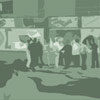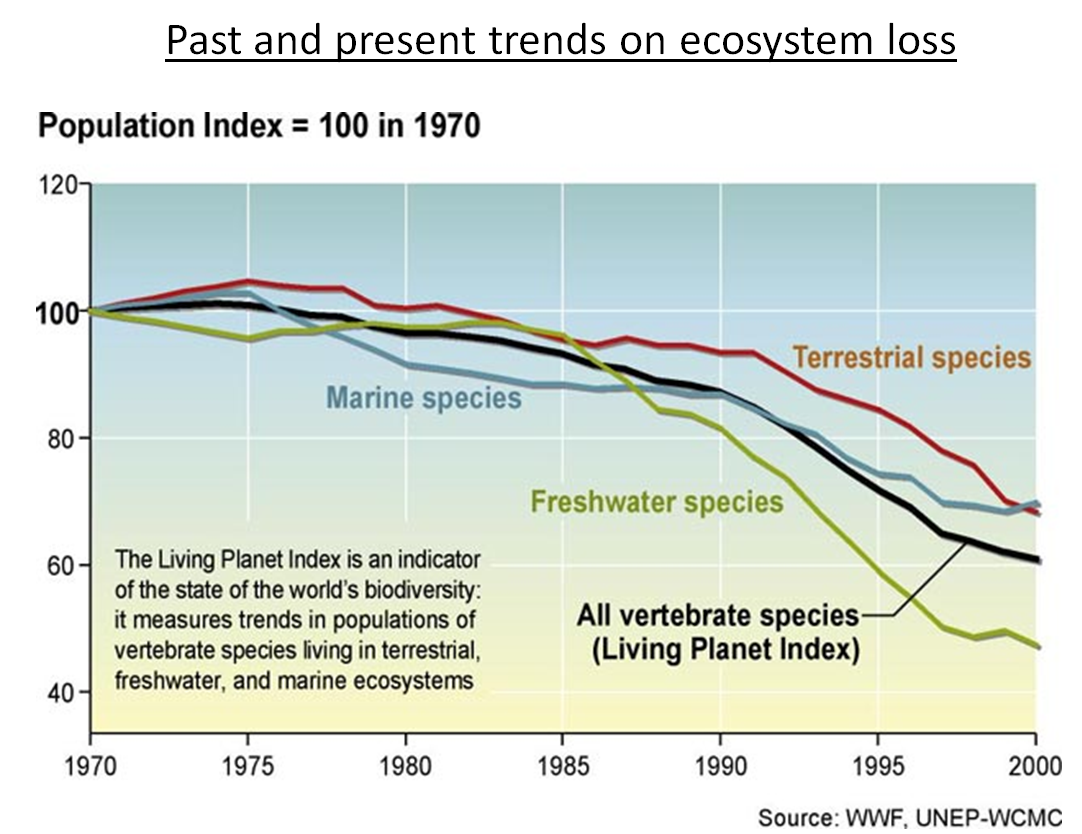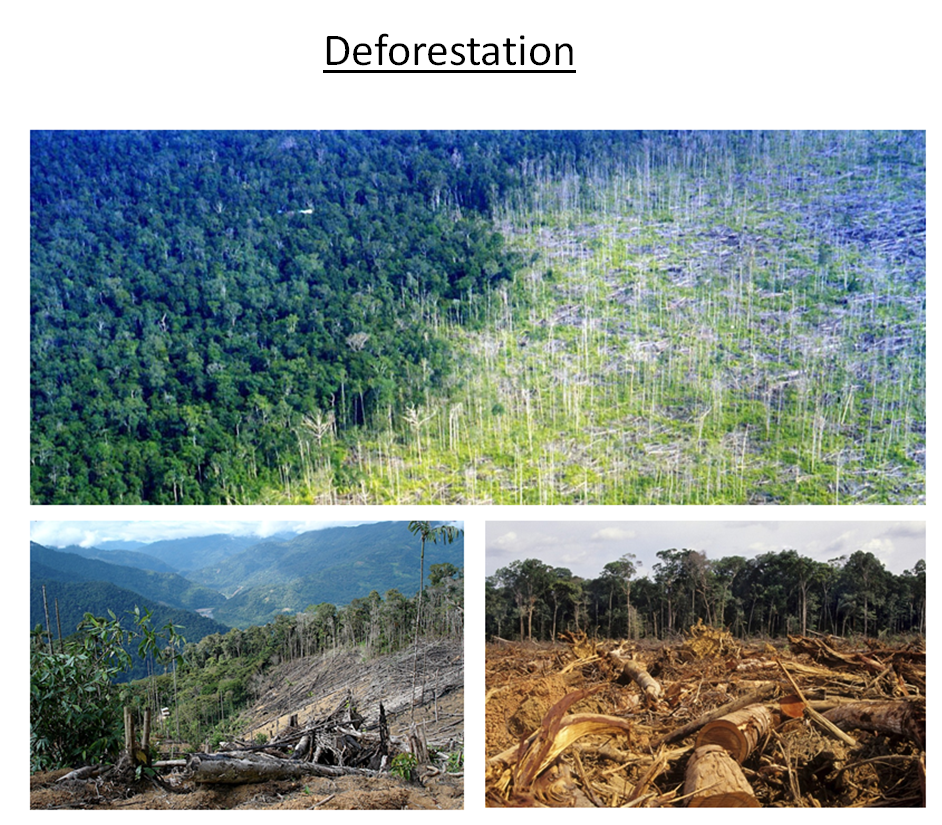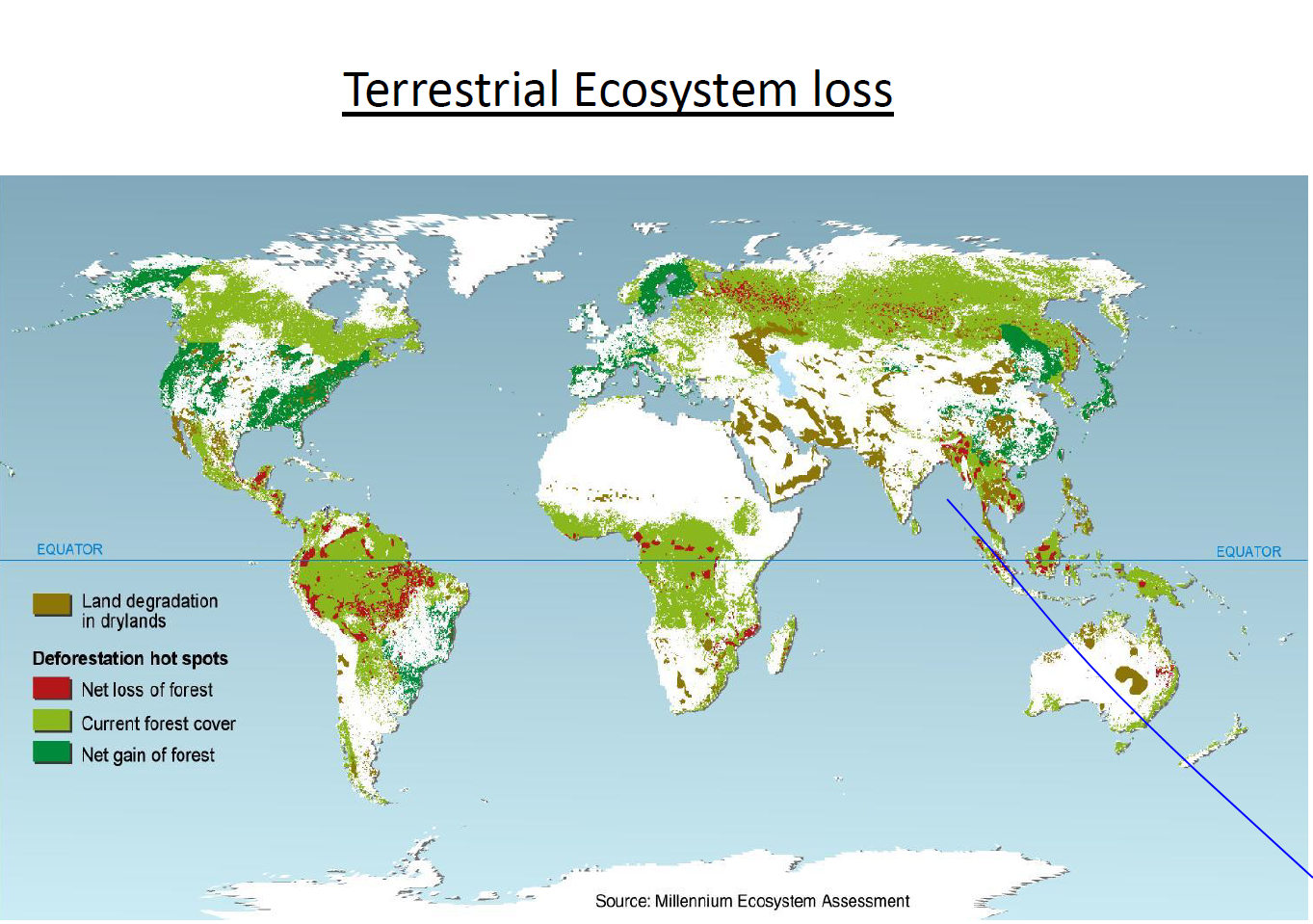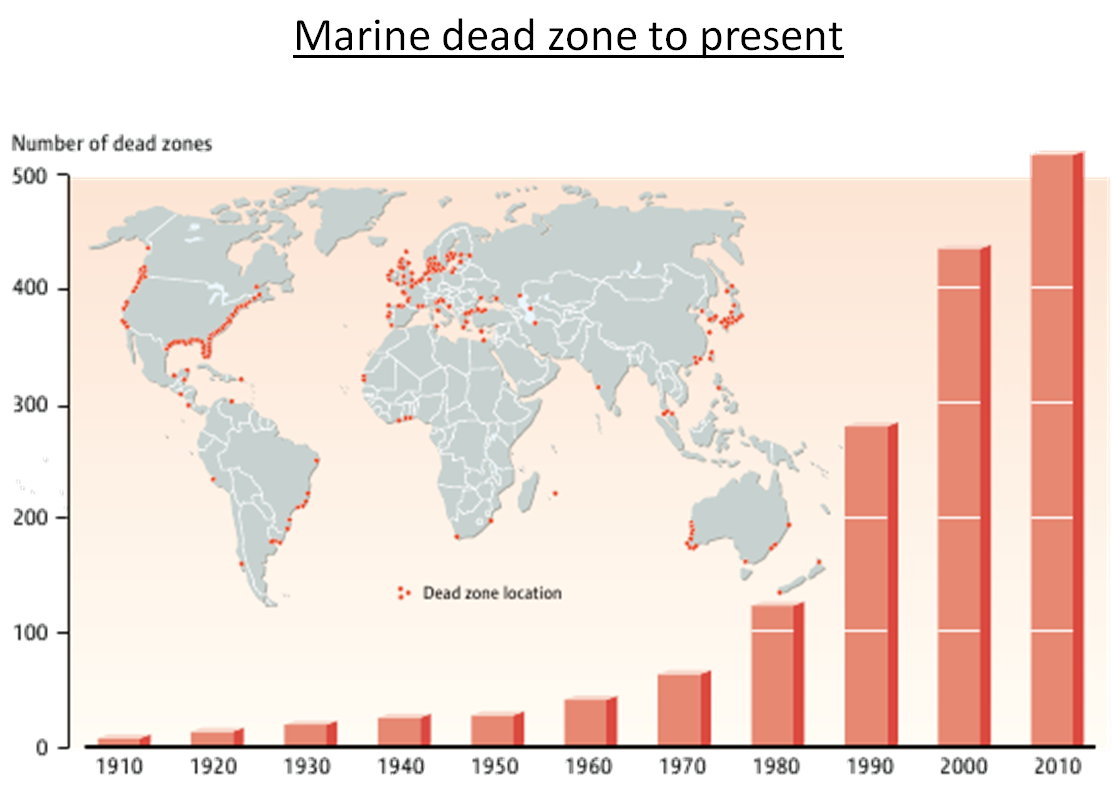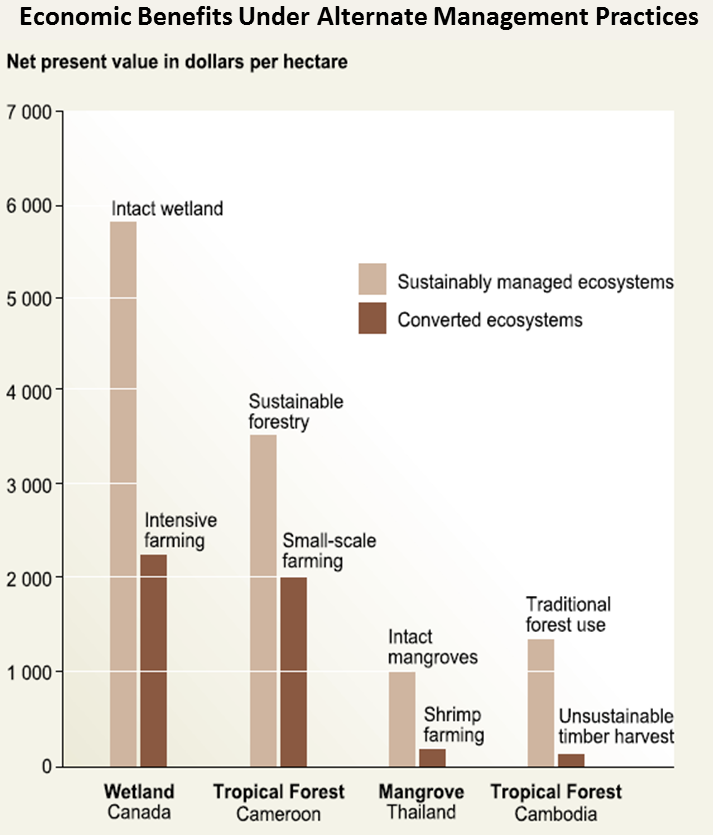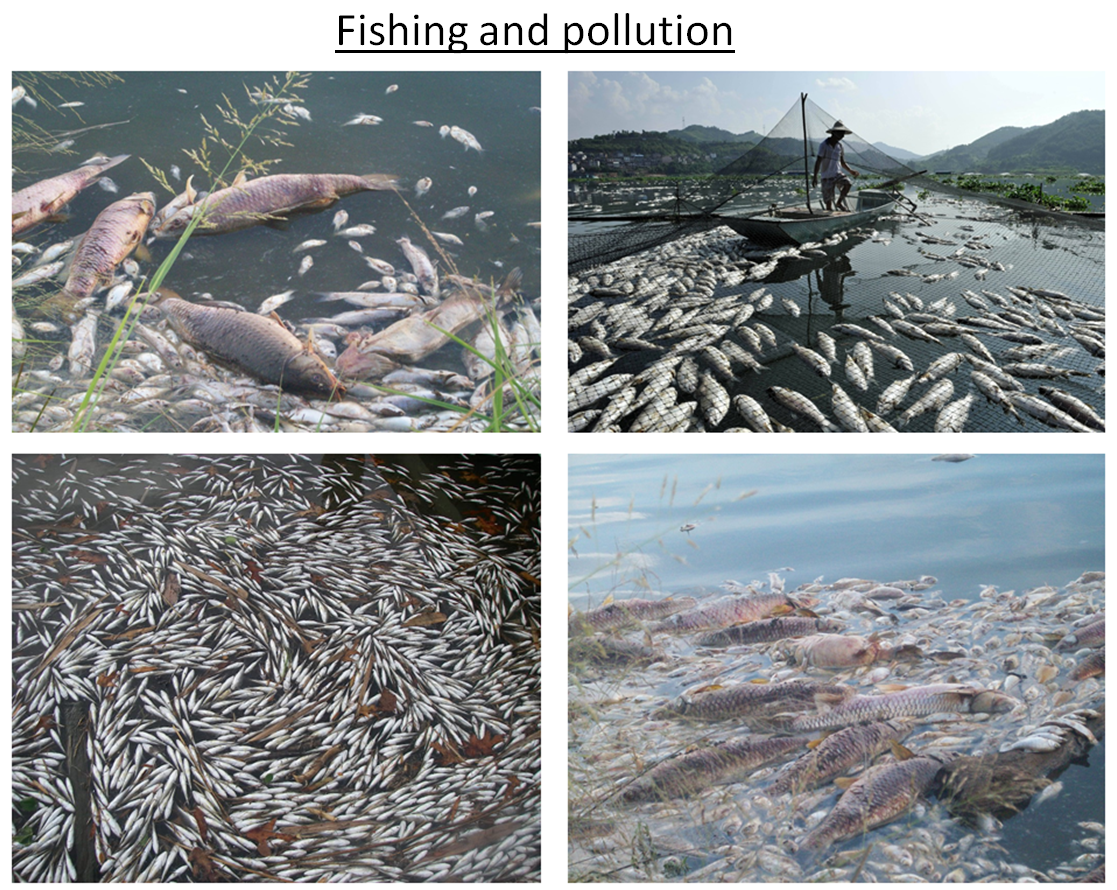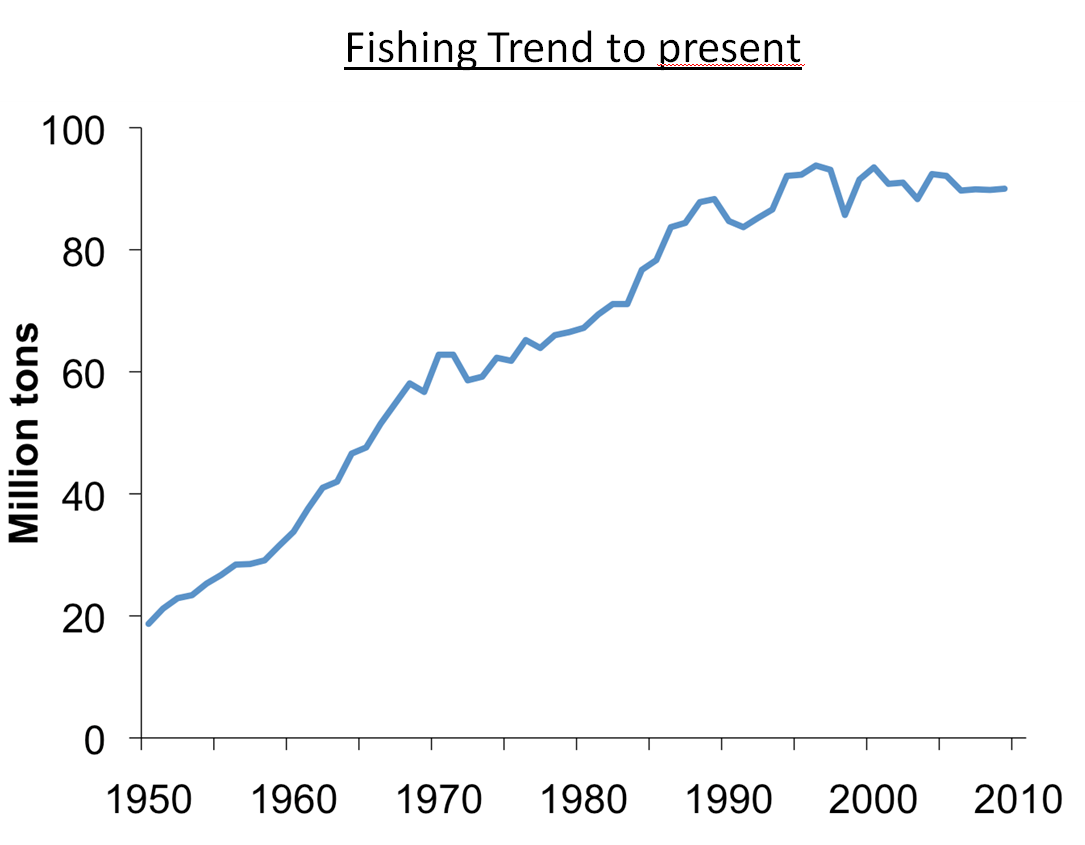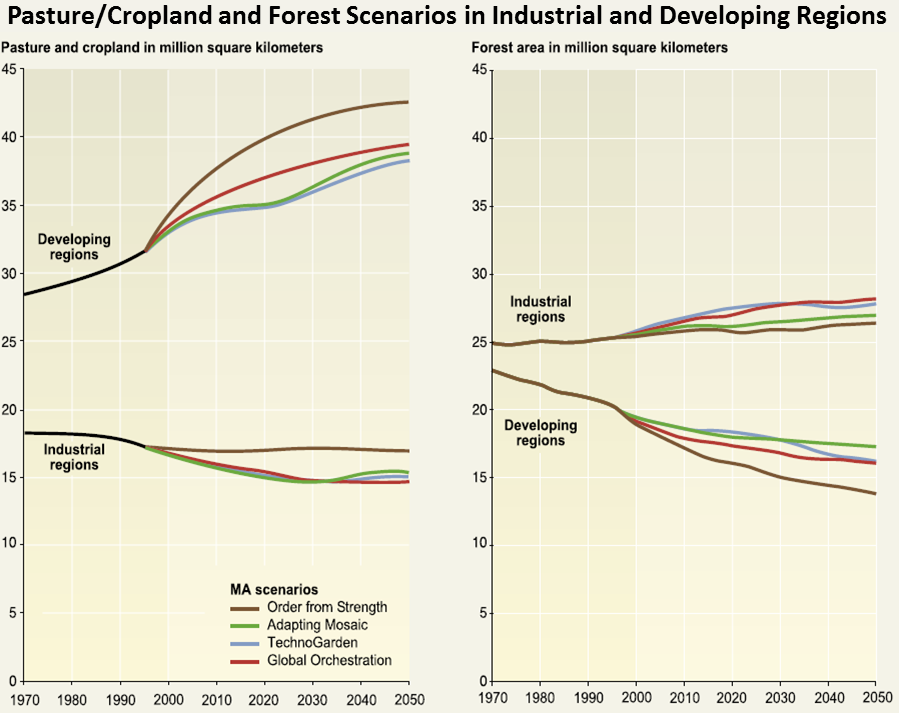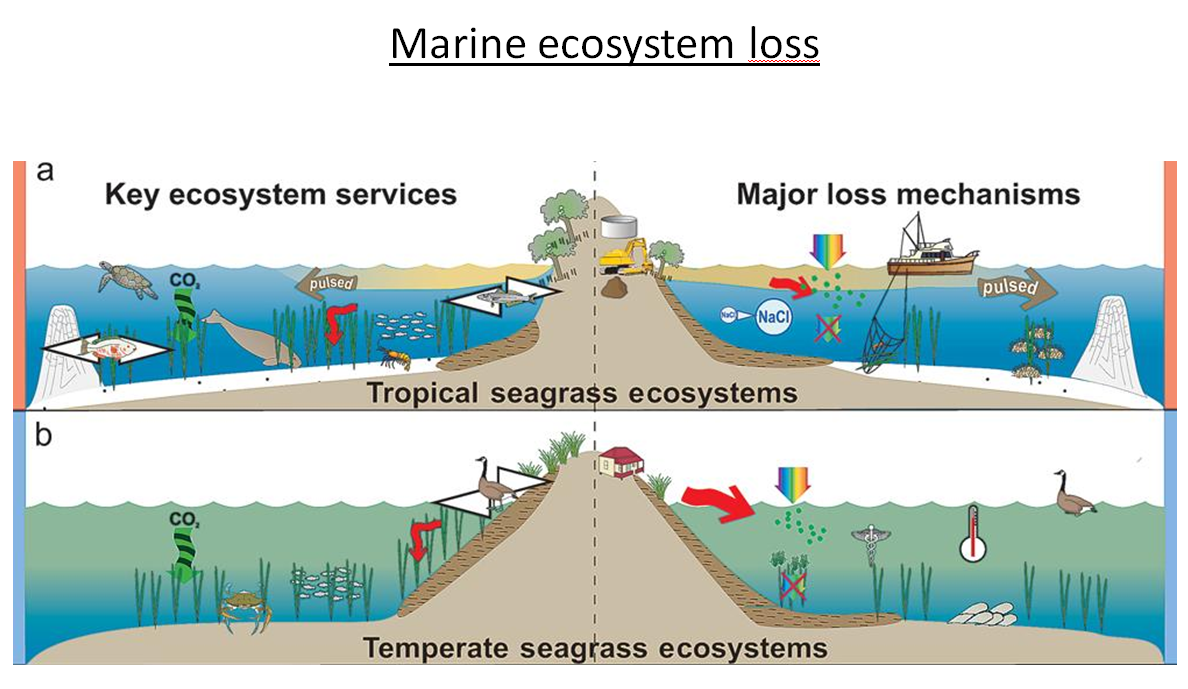Global
Submitted by sybil.bory on
deforestation
Submitted by sybil.bory on
terrestrial ecosystem loss
Submitted by sybil.bory on
marine dead zone to present
Submitted by sybil.bory on
Economic Benefits Under Alternate Management Practices
Submitted by francob12 on
Fishing and pollution
Submitted by sybil.bory on
fishing trend to present
Submitted by sybil.bory on
Pasture,Cropland and Forest Scenarios in Industrial and Developing Regions
Submitted by francob12 on
Marine ecosystem loss
Submitted by sybil.bory on
Past, Present and Future Projection of Extinction Rate
Submitted by francob12 on

